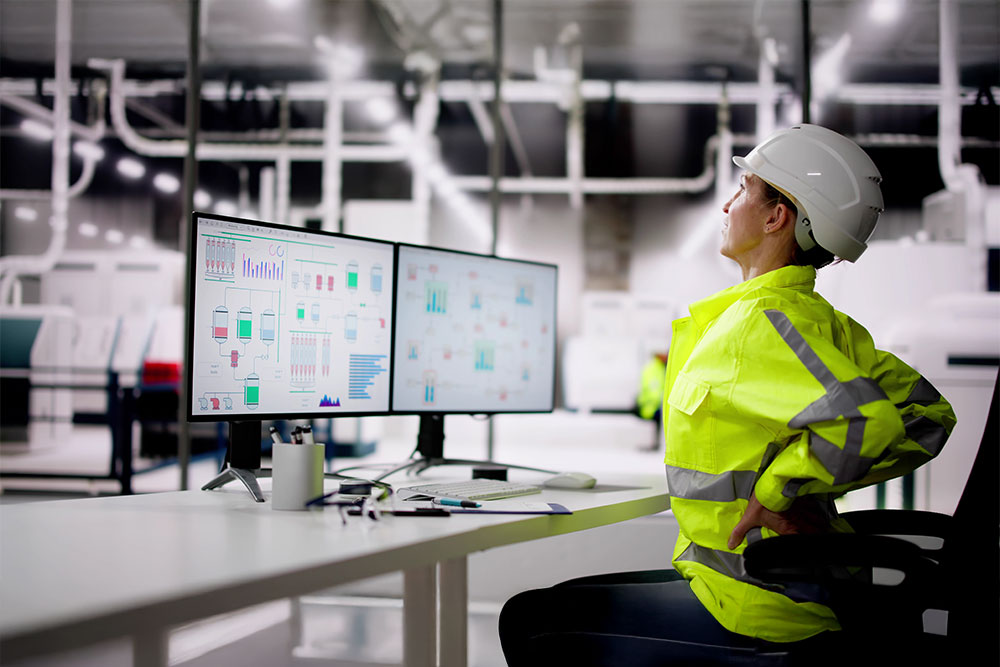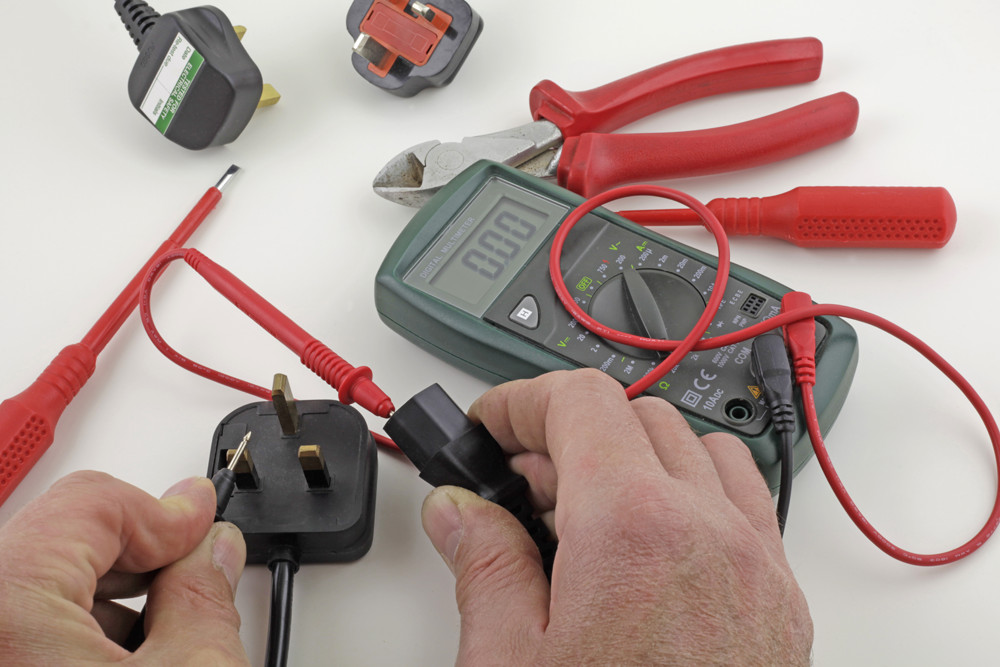
Too many businesses ignore ergonomics until staff begin reporting pain, productivity drops or someone is signed off sick. By then, the financial damage is already done. Poor ergonomics can quietly drain budgets through lost output, injury claims, higher staff turnover and other indirect costs.
In this blog, we break down the hidden costs of poor ergonomics and explain how to stop these losses before they start.
Key Takeaways
- Poor ergonomics can lead to musculoskeletal disorders (MSDs), which result in lost working days, health-related costs and reduced productivity.
- Common causes of MSDs include poor posture, repetitive tasks, awkward positioning and lack of proper support.
- Pain and discomfort reduce productivity, causing employees to slow down, take frequent breaks and make more mistakes.
- Injured or absent staff can put extra pressure on the rest of the team.
- Poor working conditions may cause employees to leave, leading to high turnover and recruitment costs.
- Regular ergonomic assessments and proper equipment can prevent injuries and improve performance.
- Training employees on ergonomics builds awareness, encourages early action and supports long-term health.
What is Ergonomics?
Workplace ergonomics is about fitting the job to the worker. When applied correctly, it helps prevent long-term injury and ill health by eliminating the everyday aches, pains and strains caused by poor work design.
Common ergonomic problems include:
- Office staff developing neck pain from looking down at screens all day
- Warehouse workers injuring their backs lifting from floor level
- Factory workers suffering wrist strain from repetitive tasks without proper rest or support
Without intervention, these pains can develop into musculoskeletal disorders (MSDs). These conditions affect the body’s muscles, joints, tendons and nerves – typically in the back, neck, shoulders and upper limbs. Over time, MSDs can lead to chronic pain, reduced mobility and long-term injury.
These issues affect both employees and the organisation.
According to the latest statistics by the Health and Safety Executive (HSE), 543,000 workers suffered from work-related musculoskeletal disorders in a single year, leading to 7.8 million lost working days.
More lost time means more costs – in lower productivity, sick pay, temporary staffing and compensation claims.
Health and Safety Courses
Our health and safety courses support legal compliance and effective risk management. They raise awareness of common workplace hazards and teach the fundamentals of safe working.
The Hidden Costs of Poor Ergonomics
1. Increased Absenteeism
Good ergonomics means setting up work to reduce physical strain. This applies across all sectors, including offices, construction and industrial workplaces.
When work is poorly designed, the people doing it are forced to compensate – often at the cost of their comfort and long-term safety. Poor ergonomics is a major cause of musculoskeletal disorders.
Common causes of MSDs include:
- Poor back support or bad posture from unsuitable seating
- Equipment or screens placed too high, low or far, causing neck and shoulder strain
- Repetitive tasks without proper wrist or hand support
- Lifting or picking up items from floor level instead of waist height
Over time, these issues drive up sick days, costing your business both time and money.
According to the Health and Safety Executive, MSDs account for 32% of all work-related ill health.

2. Reduced Productivity
Whether your employees are working at a desk, on a factory floor or out in the field, ergonomics affects how well they work. Poor ergonomics can lead to:
- More breaks to deal with the discomfort
- Slower work due to pain and fatigue
- More mistakes from distraction and discomfort
3. Legal Risks
Under UK law, you have a legal obligation to provide a safe and healthy work environment for your employees.
Key legislation relating to these duties includes:
- The Health and Safety at Work Act 1974 – You must protect employees from work-related health risks.
- The Management of Health and Safety at Work Regulations 1999 – You must assess work activities, identify health risks and take steps to reduce them.
- The Display Screen Equipment (DSE) Regulations 1992 – Poor workstation ergonomics is a risk for employees who use display screens, such as monitors or laptops, for at least an hour a day. DSE assessments must be carried out for your employees using screens daily.
Failing to comply with these laws can result in enforcement notices, fines and even prosecution for severe breaches.
4. Financial Risks
Ignoring ergonomics can expose your organisation to other financial risks.
Your employees will be at risk of suffering from MSDs, which means they may require medical treatment, physiotherapy or even long-term care. This can incur significant indirect costs for your organisation, including:
- Compensation claims
- Increased employer liability insurance premiums
- Legal fees
Plus, with fewer staff available, others will need to pick up the slack. Teams that are spread thin are less productive and typically less engaged.
5. Reputational Damage
A reputation for poor health and safety can hurt your company’s prospects.
Clients, investors and potential hires will be hesitant to work with you as they may see your business as careless or risky.
6. Higher Employee Turnover
If you don’t provide a good working environment to your employees, they may start looking for better conditions elsewhere. This puts you at risk of losing valuable staff members.
A high turnover rate will also drive up recruitment costs, slow down onboarding and minimise productivity due to unfilled roles.
Prevention Tips
Small changes can make a big difference in how your employees feel and perform.
1. Conduct Ergonomics Assessments
Regular assessments help you spot ergonomic risks before they become serious problems.
Here are some things you can do:
- In offices, assess chair support, monitor height and keyboard placement
- In warehouses, review lifting techniques, shelf heights and flooring surfaces
- On production lines, check repetitive tasks, tool positioning and standing posture
- In healthcare, assess patient handling practices and access to equipment
Assess each setup to make sure it fits the worker’s needs. This will help reduce the risk of long-term health issues.
2. Provide Ergonomic Equipment
Providing the right equipment will keep your employees comfortable.
In office settings, adjustable chairs, sit-stand desks and properly positioned screens support good posture. Ergonomic keyboards and mice help reduce wrist strain, while proper lighting cuts down on eye fatigue.
In construction sites, warehouses and factories, lifting aids and well-placed tools help minimise bending, stretching and awkward movements.

3. Training and Awareness
Workers trained on ergonomics are better equipped to stay healthy and productive.
Training should cover correct posture, stretching exercises and proper workstation adjustments.
It should also encourage taking short rest and movement breaks throughout the day to prevent strain.
The Role of Training in Preventing Ergonomic Risks
Musculoskeletal disorders are most common in sectors like construction, manufacturing and logistics. These jobs often involve repetitive tasks, heavy lifting, awkward postures or long hours in static positions.
Proper training will help reduce these risks. When workers understand how poor ergonomics affects their health, they’re more likely to adjust how they work and spot early warning signs of injury.
Our online Ergonomics Training for Industrial Workers provides guidance on identifying hazards, applying ergonomic principles to work and taking early steps to prevent long-term harm.
By investing in this training, you can empower your team to work safely while maintaining their productivity.




















